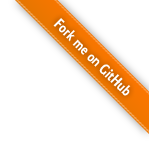

A high-productivity web framework for the Go language.
Edit, save, and refresh. Revel compiles your code and templates for you, so you don't miss a beat. Code doesn't compile? It gives you a helpful description. Run-time code panic? Revel has you covered.
Revel provides routing, parameter parsing, validation, session/flash, templating, caching, job running, a testing framework, and even internationalization.
Revel builds on top of the Go HTTP server, which was recently benchmarked to serve three to ten times as many requests as Rails across a variety of loads.
The Go HTTP server runs each request in its own goroutine. Write simple callback-free code without guilt.
Revel provides primitives that keep the web tier stateless for predictable scaling. For example, session data is stored in the user cookie, and the cache is backed by a memcached cluster.
Revel is built around composable middleware called filters, which implement nearly all request-processing functionality. Developers have the freedom to replace the default filters with custom implementations (e.g. a custom router).
Revel ships with sample applications to provide examples of real-world usage.
You will need a functioning Go 1.1 installation for this to work.
The commands at right will:
go get github.com/robfig/revel/revel
revel run github.com/robfig/revel/samples/chat
Development is closing in on the "final" 1.0 design, but the rate of change is still high. Expect to get your hands dirty.
Join our Google Group to take part in the design and development, or in IRC at Freenode #revel. You may join our announcement list to only be notified for new releases.
There are some areas that could benefit from some TLC.